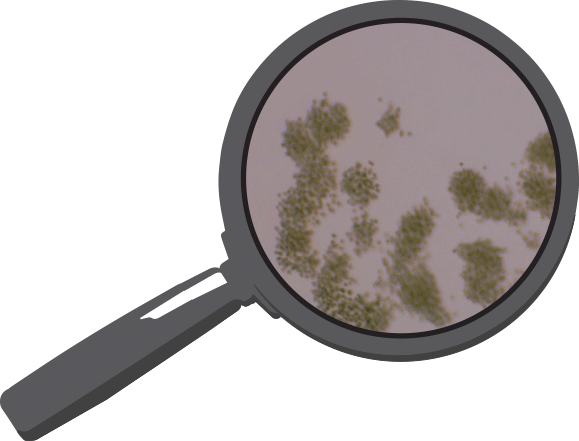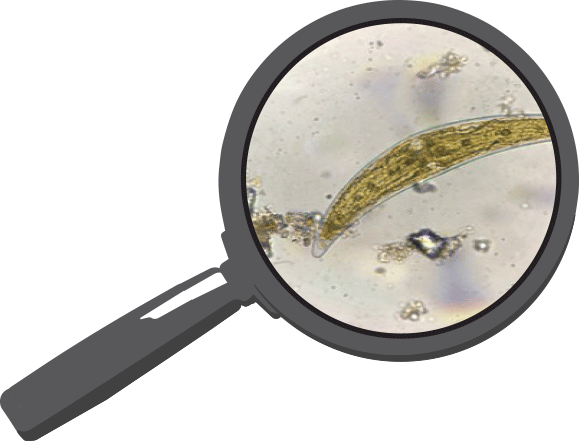Central Midwest Water Science Center—Harmful Algal Blooms Team
Links
- Document: Report (7.79 MB pdf) , HTML , XML
- Download citation as: RIS | Dublin Core
Abstract
The U.S. Geological Survey (USGS) Central Midwest Water Science Center (CMWSC) includes three States—Illinois, Iowa, and Missouri. USGS water science centers across the Nation provide information on water resources including streamflow, water use, water availability, and the quality of surface water and groundwater (https://www.usgs.gov/mission-areas/water-resources).
The USGS CMWSC Harmful Algal Blooms (HABs) team is dedicated to studying the complexity of HABs and is currently (2021) researching ways to better predict the timing, magnitude, and toxicity of HABs. Updated information about the HABs team including current projects, data releases, and publications are available on the CMWSC website (https://www.usgs.gov/centers/cm-water/science-topics/harmful-algal-blooms).
What are HABs?
Algal blooms are defined as a rapid increase of algae populations. Algae are aquatic organisms that contain chlorophyll, most needing sunlight to grow, and have no true leaves or flowers. There are many different types of algae including green algae, red algae, diatoms, and cyanobacteria (also known as blue-green algae), which are bacteria but function like algae, and others. Algae range in size from single-celled microscopic organisms to large multicellular organisms, such as seaweed or giant kelp. Most algal blooms are composed of cyanobacteria or green algae. Algal blooms become harmful when the blooms add substantial amounts of organic matter to fresh and saltwater. After algae die, decomposers use an oxygen consuming process that can reduce dissolved oxygen concentrations below critical thresholds for living organisms and cause fish kills. Algal blooms can alter natural aquatic biodiversity and reduce recreational opportunities including swimming, boating, and fishing. Also, some cyanobacteria can produce toxins that are directly harmful to humans, pets, and wildlife, and produce taste and odor compounds that make drinking water and fish flesh smell and taste bad.
What Causes HABs?
The conditions that trigger HABs production are complex and often site specific. Blooms are typically considered to result from excessive nutrients and warm waters, which provide ideal conditions for algal growth. However, lakes with low nutrient concentrations also experience algal blooms but much less is understood about what triggers HABs during these conditions.
Are Algae Always Harmful?
Algae are not always harmful. They have a vital role in ecosystem function—as primary producers, algae are the base of the food web and, therefore, are an important food source to many aquatic organisms, including fish. Primary producers acquire energy from sunlight (photosynthesis) or from nonliving organic sources (chemosynthesis). These processes maintain ecosystem functions, and algae also produce oxygen that is used by many respiring organisms. When algae are in appropriate concentrations, they can support a natural biodiversity and healthy ecosystem.
Common Effects from HABs
The effects of HABs are extensive and expand across multiple disciplines including recreational management, economics, public health, and ecology. Resulting effects can include increased costs for treatment and management, reductions in public health and recreational uses, and unquantifiable ecological losses.
Recreational Management
Many aspects of recreation involve water, including swimming, kayaking, fishing, boating, and more. However, when HABs occur, water recreation is more difficult, unpleasant, and discouraged by the U.S. Environmental Protection Agency (2021a) because of the potential toxicity to humans and pets. A recent study indicated a 10–13 percent decline in recreational fishing license sales on Lake Erie between 2011 and 2014 during a period coinciding with algal blooms (Wolf and others, 2017). Many river and lake towns rely on seasonal recreational tourism that can be affected by HABs.
Economics
Hoagland and others (2002) analyzed a survey of experts from individual coastal States, reviewed the literature, and used their own calculations to estimate costs associated with HABs. In the United States, an estimated $20 million is spent annually on public health effects from HABs based on shellfish and ciguatera fish poisoning in humans. The effects of HABs cost commercial fisheries an average of $18 million annually, and for recreation and tourism, a total annual effect of $7 million was estimated. Hoagland and others (2002) estimated that $2 million annually goes towards monitoring and management of HABs. With the occurrence of blooms increasing, these estimates are expected to increase (Anderson and others, 2000). Estimates since this study have yet to be made because of the complexity of estimating highly variable data. Although taste and odor compounds produced by cyanobacteria have no known health effects, they can affect water supplies resulting in unpalatable drinking water. Public water suppliers spend additional funds to remove these compounds from drinking water.
Public Health
Cyanobacterial HABs can produce cyanotoxins that are directly toxic to humans, pets, and wildlife. Exposure to cyanotoxins can occur from drinking water, recreational waters, and fish from areas of contamination. These toxins have various effects to human health including skin rashes, fever-like symptoms, respiratory, and gastrointestinal problems (Merel and others, 2013). Some cyanobacteria are capable of producing multiple toxins.
Ecology
Toxins can buildup in an organism over time, which is a process known as bioaccumulation. Bioaccumulation can affect organisms throughout the food chain. Additionally, HABs can alter the community structure lowering species richness and biodiversity. As HABs complete their life cycle, respiring microbes break down the algae in a process known as decomposition, which consumes oxygen. Lowering dissolved-oxygen concentrations can result in concentrations below critical thresholds for most living organisms, often resulting in fish kills.
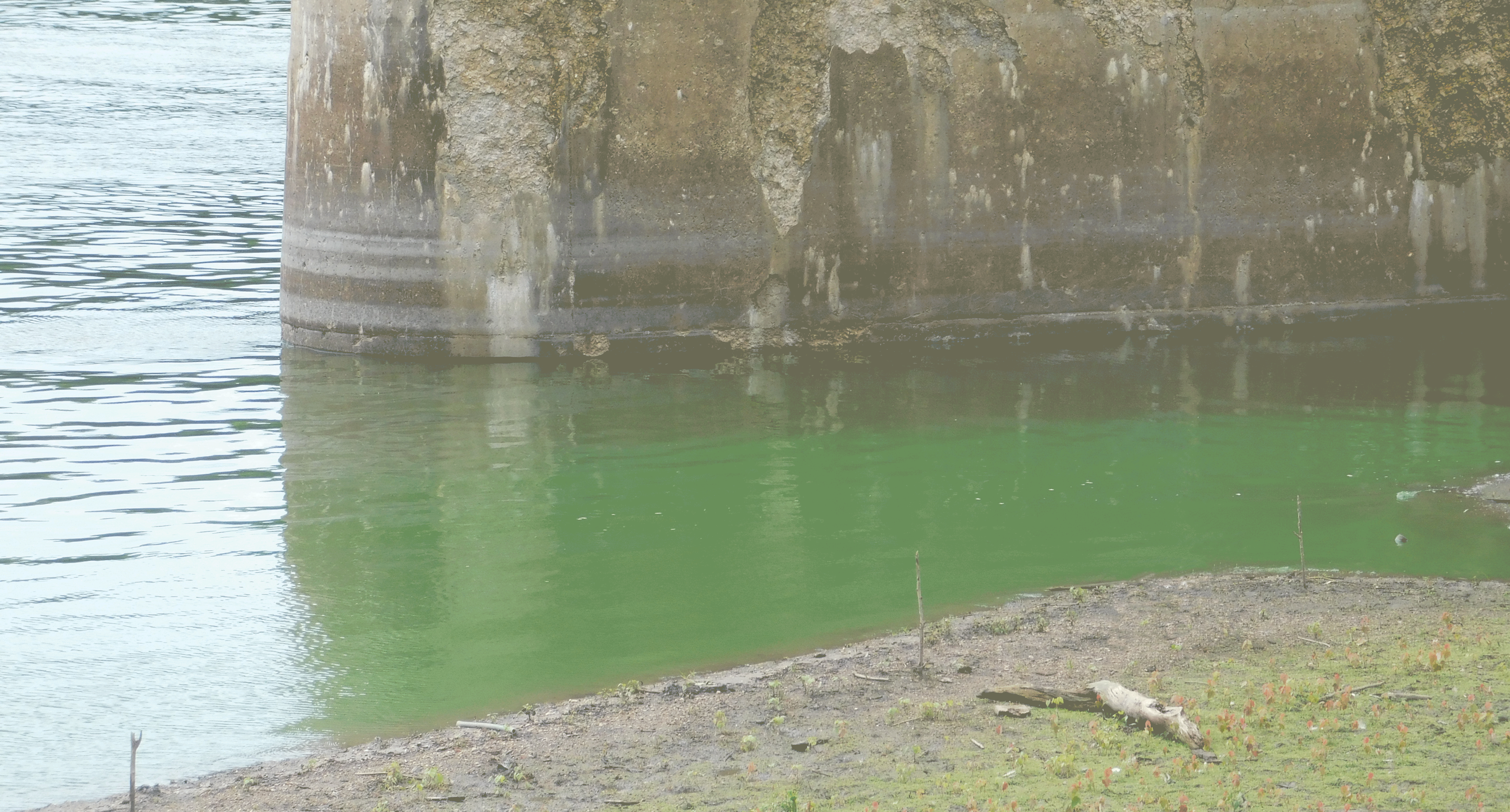
Photograph of a visible algal bloom in the Illinois River at Henry, Illinois. Photograph by Jessica Garrett, U.S. Geological Survey.
CMWSC HABs Team Efforts to Better Understand HABs
As of 2020 the CMWSC is working on multiple projects that involve HABs. Scientists within the CMWSC are interested in data collection and analysis to predict the timing, magnitude, and toxicity of HABs.
Next Generation Water Observing System
USGS scientists and collaborators are monitoring algal blooms on the Illinois River. The Illinois River Basin was a selected as the third Next Generation Water Observing basin with appropriated funding directed towards monitoring, sampling, and studying the complexities of algal blooms with new technologies and methodologies. The basin is susceptible to algal blooms, which are becoming increasingly common, because of multiple urban and agricultural effects on water quality. Scientists are interested in understanding the environmental factors that affect the timing, magnitude, and toxicity of HABs. Large sampling efforts, real-time data with continuous sensors, and satellite imagery are used to improve the overall understanding of HABs and associated toxin production on the Illinois River. Large sampling efforts, real-time data with continuous sensors, and satellite imagery are used to improve the overall understanding of HABs and associated toxin production on the Illinois River.
Upper Illinois River Hydrodynamic and Temperature Modeling
USGS scientists, in cooperation with the Illinois Environmental Protection Agency, are developing a model of an area of the upper Illinois River that is known to experience HABs (Gregg Good, Illinois EPA, written commun., 2020). Real-time water-quality monitors, streamgages, and meteorological measurements including wind speed, air temperature, and solar radiation can provide data for the model. This model can be used to better understand how hydrodynamics and meteorologic conditions contribute to the development of HABs in the Illinois River.
Water-Quality Monitoring Plan at Mozingo Lake in Maryville, Missouri
USGS scientists, in cooperation with the Missouri Department of Natural Resources, are working to develop a water-quality monitoring plan for Mozingo Lake, a reservoir that serves as a large recreational area and provides drinking water to the city of Maryville. The lake has been susceptible to HABs, causing taste and odor issues in the drinking water and a loss of recreational opportunities. A streamgage that includes continuous water-quality data is planned to be installed at the primary inflow to the reservoir, Mozingo Creek. The streamgage data, in addition to nutrient and suspended-sediment samples within the watershed, can provide information on the timing and magnitude of nutrients and other environmental factors that are contributing to the blooms. These data can be used to support best management practices that may potentially reduce the frequency of HABs while quantifying the nutrient and sediment concentrations entering the reservoir.
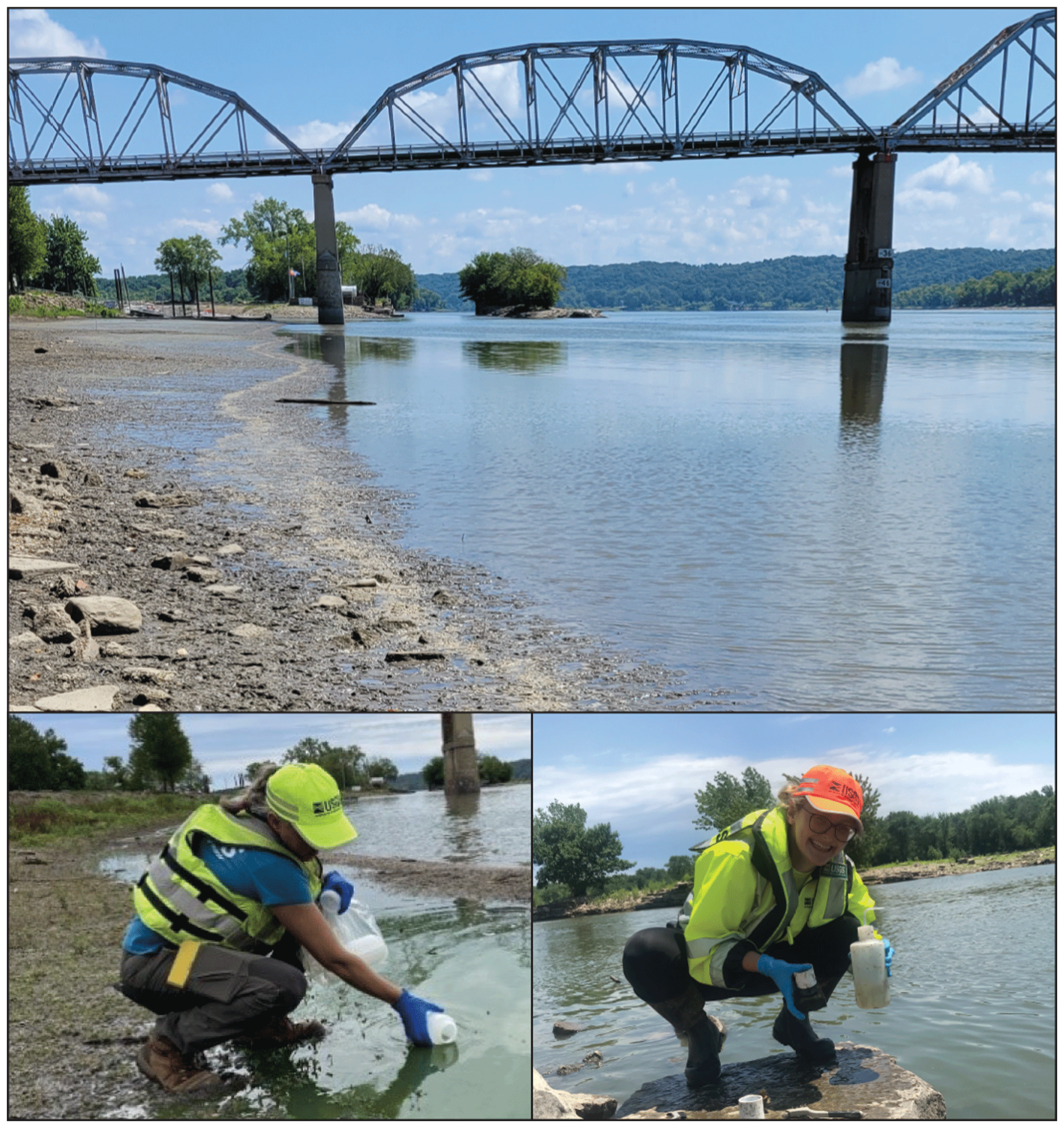
Hydrologists sampling harmful algal blooms in Henry, Illinois. Photographs by the U.S. Geological Survey.
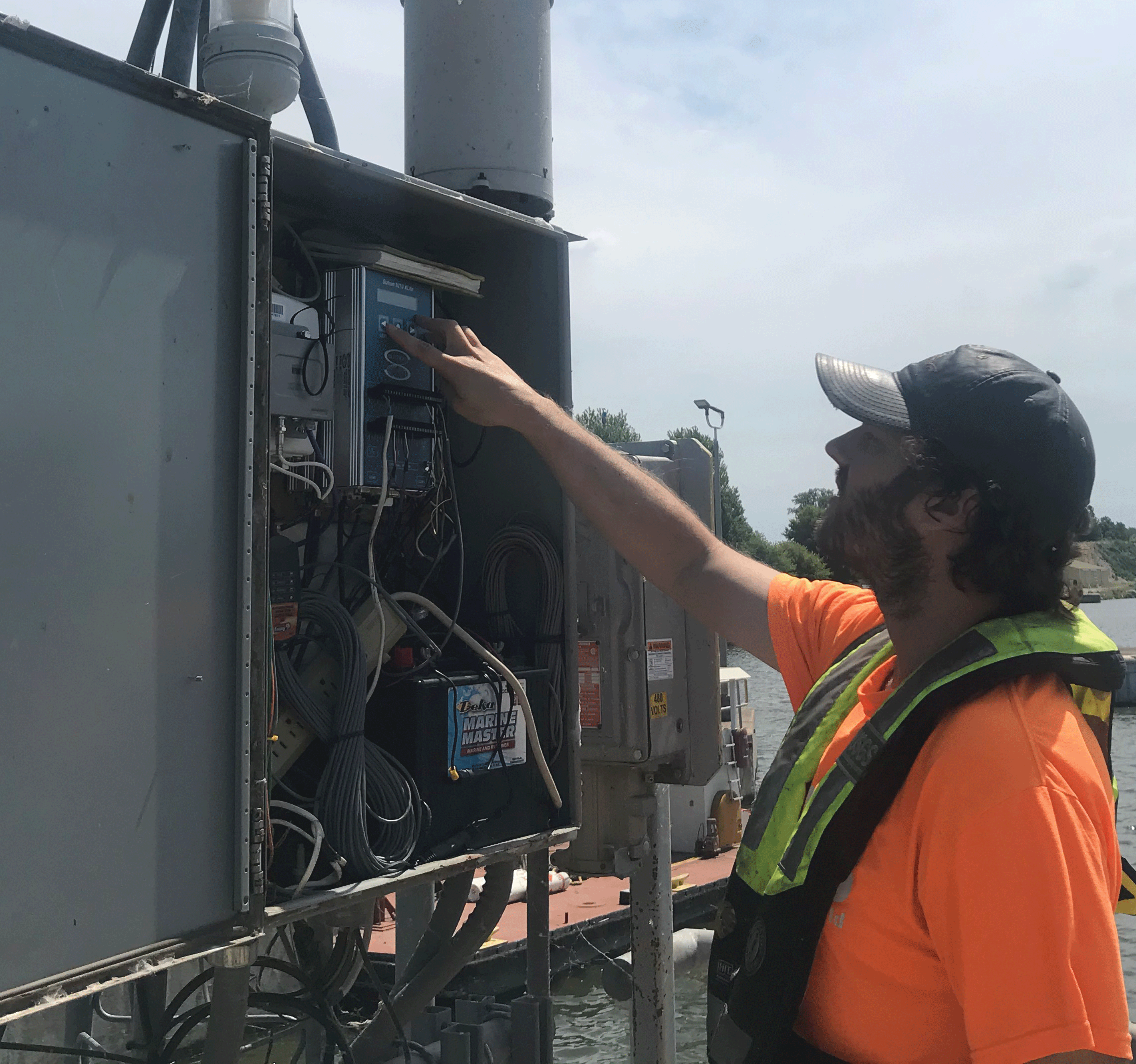
U.S. Geological Survey scientist checking a streamgage at Starved Rock Lock and Dam, Ottawa, Illinois. Photograph by the U.S. Geological Survey.
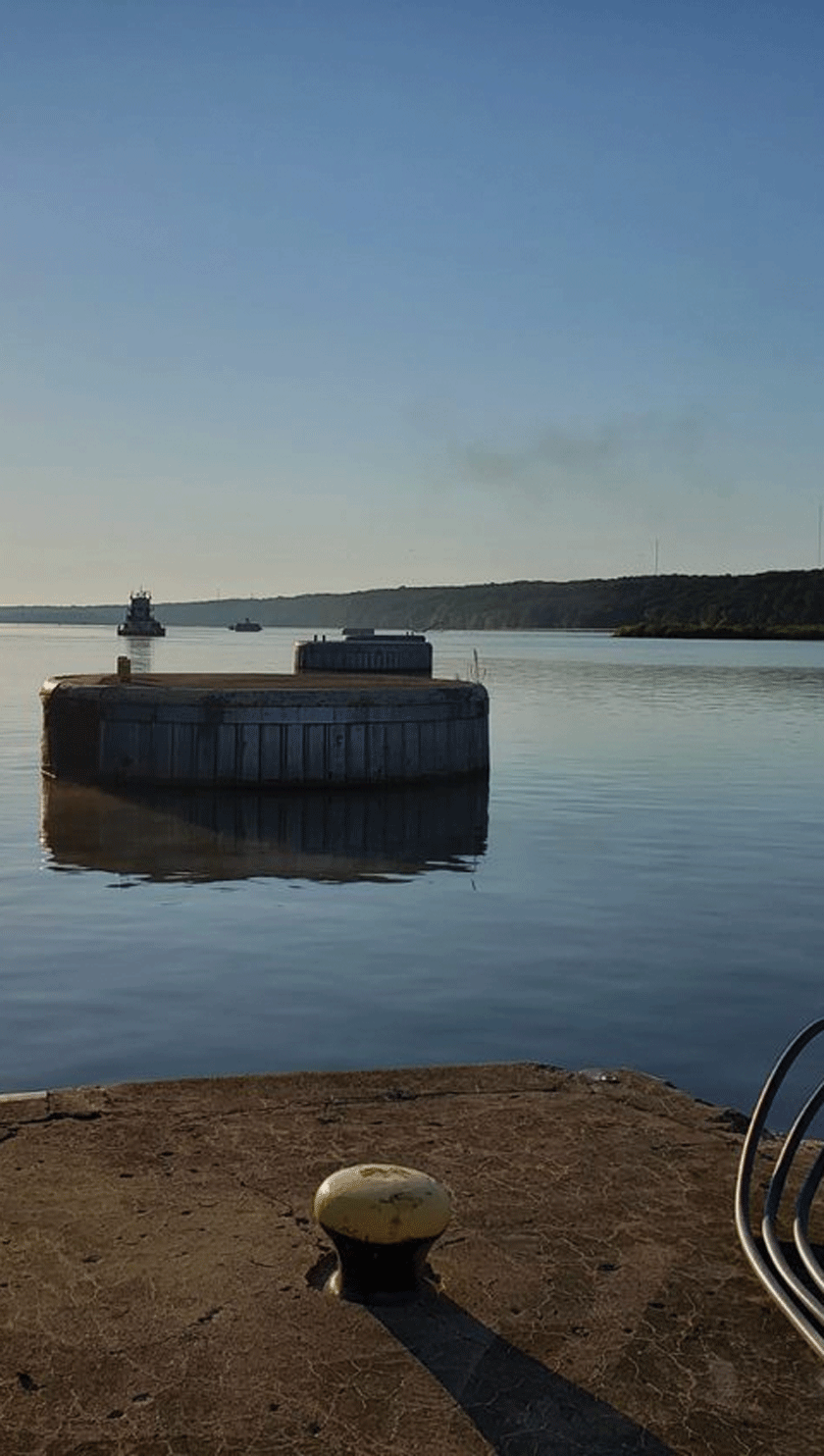
The bullnose on the Starved Rock Lock and Dam that will house water quality and harmful algal bloom monitoring equipment as part of the Next Generation Water Observing Project. Photograph by the U.S. Geological Survey.
References Cited
Anderson, D.M., Hoagland, P., Kaoru, Y., and White, A.W., 2000, Estimated annual economic impacts from harmful algal blooms (HABs) in the United States: Woods Hole Oceanographic Institution, accessed August 10, 2021, at https://www.whoi.edu/cms/files/Economics_report_18564_23050.pdf.
Hoagland, P., Anderson, D.M., Kaoru, Y., and White, A.W., 2002, The economic effects of harmful algal blooms in the United States—Estimates, assessment issues, and information needs: Estuaries, v. 25, no. 4, p. 819–837, accessed August 10, 2021, at https://doi.org/10.1007/BF02804908.
Merel, S., Walker, D., Chicana, R., Snyder, S., Baures, E., and Thomas, O., 2013, State of knowledge and concerns on cyanobacterial blooms and cyanotoxins: Environment International, v. 59, p. 303–327. [Also available at https://doi.org/10.1016/j.envint.2013.06.013.]
U.S. Environmental Protection Agency, 2021a, Health effects from cyanotoxins: accessed August 10, 2021, at https://www.epa.gov/cyanohabs/health-effects-cyanotoxins.
U.S. Environmental Protection Agency, 2021b, Learn about cyanobacteria and cyanotoxins: U.S. Environmental Protection Agency web page, accessed February 22, 2022, at https://www.epa.gov/cyanohabs/learn-about-cyanobacteria-and-cyanotoxins.
Wolf, D., Georgic, W., and Klaiber, H.A., 2017, Reeling in the damages—Harmful algal blooms’ impact on Lake Erie’s recreational fishing industry: Journal of Environmental Management, v. 199, p. 148–157. [Also available at https://doi.org/10.1016/j.jenvman.2017.05.031.]
For more information about this publication, contact:
Director, USGS Central Midwest Water Science Center
405 North Goodwin
Urbana, IL 61801
217–328–8747
For additional information, visit: https://www.usgs.gov/centers/cm-water
Publishing support provided by the Rolla Publishing Service Center
Suggested Citation
Summers, K.M., Krempa, H.M., and Garrett, J.D., 2022, Central Midwest Water Science Center— Harmful Algal Blooms team: U.S. Geological Survey Fact Sheet, 2022–3011, 4 p., https://doi.org/10.3133/fs20223011.
ISSN: 2327-6932 (online)
ISSN: 2327-6916 (print)
| Publication type | Report |
|---|---|
| Publication Subtype | USGS Numbered Series |
| Title | Central Midwest Water Science Center— Harmful Algal Blooms team |
| Series title | Fact Sheet |
| Series number | 2022-3011 |
| DOI | 10.3133/fs20223011 |
| Year Published | 2022 |
| Language | English |
| Publisher | U.S. Geological Survey |
| Publisher location | Reston, VA |
| Contributing office(s) | Central Midwest Water Science Center |
| Description | 4 p. |
| Online Only (Y/N) | N |
| Google Analytic Metrics | Metrics page |



